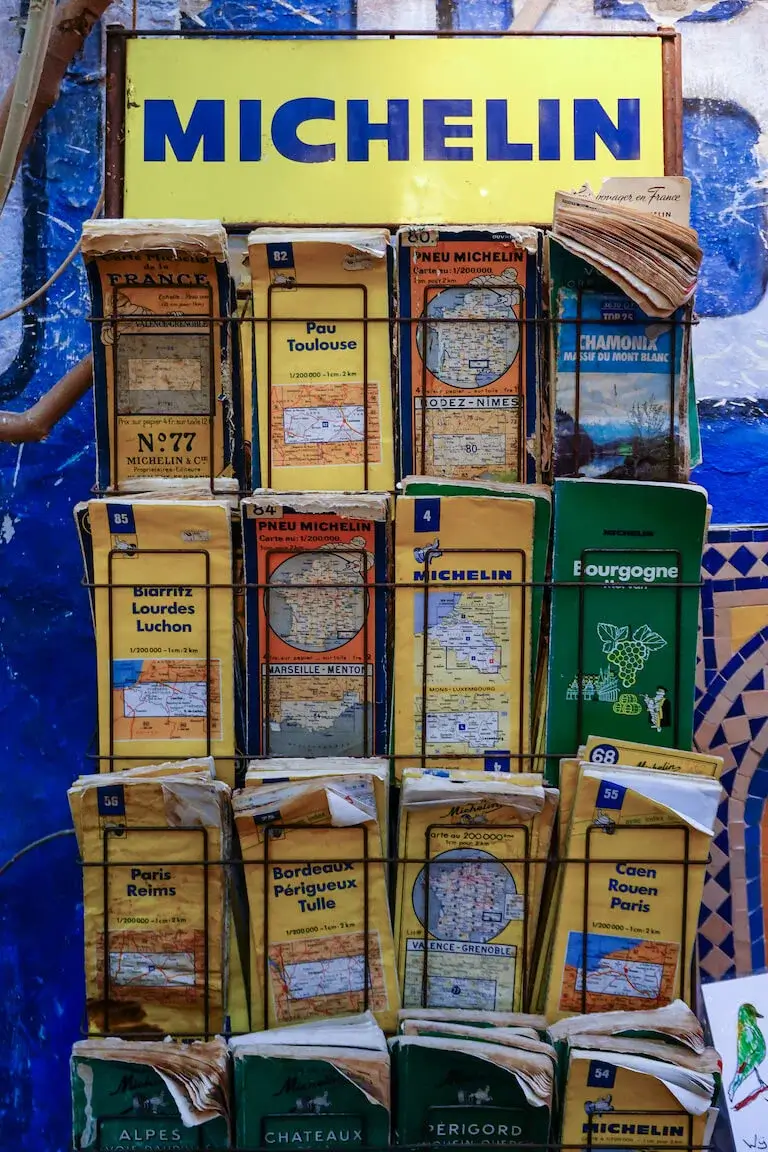Listen to This Article:
Michelin stars are one of the highest honors in the culinary world. They don’t just recognize incredible food—they shine a spotlight on the cities and countries setting the standard for exceptional dining experiences.
For culinary professionals, keeping an eye on where Michelin-starred restaurants are most concentrated can offer valuable insight. These locations often reflect where innovation is happening, where talent is drawn, and where new opportunities may be waiting.
In this article, we’re taking a closer look at the top countries with the most Michelin stars, based on the MICHELIN Guide as of May 2025. These rankings can shift each year as new restaurants earn stars and others fall off the list—but this snapshot reveals which countries are currently leading the way in fine dining.
What Are Michelin Stars (and Why Do They Matter)?
Before we dive into the countries leading the way in Michelin-starred dining, it’s worth understanding what these stars represent—and why they carry such weight in the culinary world.
Michelin stars are awarded by the MICHELIN Guide, a respected restaurant rating system that began as a way to encourage road travel in France. Over time, it has evolved into one of the most influential benchmarks for excellence in fine dining.
While Michelin stars are technically awarded to restaurants, not individual chefs, many build their careers and reputations around earning and maintaining them. The chef who tops the list of chefs with the most stars as of 2025 is the late French chef Joël Robuchon, with 31 stars.
What Do Michelin Stars Mean?
There are three levels of Michelin stars:
- One Star – High-quality cooking with clear, consistent flavors and excellent ingredients.
- Two Stars – Refined, skillful cuisine that reflects the chef’s unique style and vision.
- Three Stars – Exceptional food at the highest level—cooking that becomes an experience.
As of May 2025, there are 3,053 one-star, 503 two-star, and 153 three-star restaurants worldwide. These numbers shift as the guide is updated annually, but they offer a glimpse into the competitive nature of this recognition.
While guides are published by country or region annually, restaurant entries are reviewed and updated on a rolling basis throughout the year. So, you can visit the MICHELIN Guide website at any time to see the current full listing of starred restaurants.
What Is a Michelin Green Star?
The Michelin Green Star award honors restaurants that pair culinary excellence with environmental responsibility, like using local ingredients, minimizing waste, and supporting sustainable practices. For chefs, it’s a growing mark of distinction in today’s food world.
With that context in mind, here are the top countries leading the world in Michelin-starred dining—and what makes each one a standout on the global culinary stage.
Note: The following Michelin star totals are current as of June 2025 and reflect the most recent MICHELIN Guide updates.
Top 10 Countries with Most Michelin Star Restaurants
1. France
Michelin-Starred Restaurants: 654
(542 one-star, 81 two-star, 31 three-star)
As the birthplace of the MICHELIN Guide, France remains the global leader in Michelin-starred dining, making it one of the most prestigious countries for fine dining recognition.
The 2025 selection shows a strong shift toward sustainability, regional diversity, and younger chefs putting a modern spin on classic French techniques.
Two restaurants were newly awarded three stars this year, both known for refined, seafood-focused cuisine with a deep connection to place—reflecting France’s ongoing love for seasonality and terroir.
Nine restaurants earned a second star, while 57 received their first, with at least one new star in each of France’s 13 mainland regions.
Creative, globally inspired menus are gaining momentum, with some chefs blending French tradition with plant-forward or fusion-style multicultural elements.
France continues to be a top destination for culinary training and career growth—competitive, yes, but still one of the best places to refine your skills and build international credibility.

The Michelin Guide began as a guidebook in France to encourage people to get out and drive more.
2. Italy
Michelin-Starred Restaurants: 393
(341 one-star, 38 two-star, 14 three-star)
Italy continues to lead southern Europe in Michelin-starred dining, offering a rich mix of regional tradition and modern creativity. From Alpine tasting menus to coastal simplicity, its culinary landscape remains one of the most diverse in the world.
In 2025, Casa Perbellini 12 Apostoli in Verona was elevated to the prestigious three-star category, bringing Italy’s total to 14 three-star restaurants. Thirty-three new restaurants received their first star this year, many of them led by chefs under 35 who trained under Italian icons like Antonino Cannavacciuolo and Massimo Bottura.
Two restaurants earned a second star for 2025:
- Villa Elena in Bergamo was praised for its technical brilliance
- Campo del Drago in Montalcino was recognized for its Tuscan-inspired creativity
Sustainability continues to gain ground in Italy’s fine dining scene. Eleven new restaurants received the Michelin Green Star, bringing the national total to 69 establishments acknowledged for environmentally responsible practices.
Lombardy leads the way with 61 starred restaurants, followed closely by Campania, Tuscany, and Piedmont, each showcasing strong regional character and culinary excellence.
A sweet standout for 2025: seven restaurants were added to the Michelin Passion Dessert list, highlighting Italy’s continued leadership in pastry and dessert artistry.
3. Japan
Michelin-Starred Restaurants: 393
(341 one-star, 38 two-star, 14 three-star)
Japan is known for its craftsmanship, seasonality, and respect for tradition. With 393 Michelin-starred restaurants, it remains one of the most recognized countries in the MICHELIN Guide, alongside France and Italy.
Tokyo leads the country with an impressive 170 starred restaurants, along with 110 Bib Gourmand selections, offering high-quality food at more accessible prices. Kyoto and Osaka contribute over 170 starred restaurants between them, with a strong presence of traditional kaiseki and sushi.
In 2025, Sézanne in Tokyo was promoted to the three-star category, joining iconic establishments like Sukiyabashi Jiro and Kyo Aji.
The 2025 Guide also includes 69 Green Star restaurants, reflecting Japan’s increasing focus on sustainability and responsible sourcing.
4. Germany
Michelin-Starred Restaurants: 340
(280 one-star, 50 two-star, 10 three-star)
Germany continues to be a major presence in the world of fine dining, blending classical precision with fresh ideas and modern technique.
The country’s three-star restaurants are known for their attention to detail and high standards, with names like Aqua, The Table, Kevin Fehling, and Victor’s Fine Dining continuing to set the bar.
At the two-star level, there’s a growing mix of modern German cooking and international influences, showing how the country’s food scene is becoming more diverse.
Young chefs are making their mark, with a number of rising stars earning recognition for bold, seasonal menus that blend traditional German roots with global inspiration.
Germany’s culinary hubs stretch beyond Berlin and Munich, with standout restaurants in smaller towns and regions—reflecting the guide’s widening lens on excellence across the country. As sustainability becomes more central to the guide’s criteria, German chefs are increasingly focusing on local sourcing, reduced waste, and environmentally mindful operations.
5. Spain
Michelin-Starred Restaurants: 291
(242 one-star, 33 two-star, 16 three-star)
Spain continues to shine as a global culinary powerhouse, with the 2025 Guide adding one new three-star, three two-star, and 32 one-star restaurants.
Casa Marcial (Asturias) joins the elite ranks of three-star restaurants, known for its deep regional ties and inventive tasting menus that highlight the landscape and traditions of northern Spain.
With over 1,250 restaurants included in the full selection, Spain’s food scene is thriving—not just in major cities like Madrid and Barcelona but also in emerging regions such as Aragón and the Canary Islands.
More chefs are blending classic French techniques with local Spanish ingredients, creating dishes that feel both rooted in tradition and boldly creative.
Sustainability is also becoming a bigger focus, with nine new Green Stars awarded to restaurants that are leading the way in eco-conscious practices.
6. United States
Michelin-Starred Restaurants: 235
(188 one-star, 33 two-star, 14 three-star)
The MICHELIN Guide’s regional approach in the U.S. helps spotlight restaurants outside the usual big-city scenes. It’s a way to recognize the rich food cultures that thrive across different states and communities.
The 2025 Guide marks a significant expansion, introducing the MICHELIN Guide American South, covering Alabama, Louisiana, Mississippi, North Carolina, South Carolina, and Tennessee, and also incorporates Atlanta.
What Is a Regional MICHELIN Guide?
The MICHELIN Guide is organized by region or country, depending on how the Guide is released. A regional guide—like MICHELIN Guide California or MICHELIN Guide Nordic Countries—focuses on a specific area while still using the same global criteria to award stars. That means a star earned in a regional guide carries the same weight and prestige as one earned in any other part of the world. While inspectors may take local culture and dining style into account, a Michelin Star is always a Michelin Star.
7. United Kingdom
Michelin-Starred Restaurants: 220
(181 one-star, 29 two-star, 10 three-star)
The UK continues to grow its presence in the fine dining world, with 22 new one-star restaurants added in 2025 and a major milestone: Moor Hall in Lancashire was promoted to three stars, joining the country’s most elite dining establishments.
London remains a culinary powerhouse, earning new stars for several firsts—including the UK’s first Greek Michelin-starred restaurant (OMA), a standout Korean counter-dining experience (DOSA), and the country’s first fully plant-based starred restaurant (Plates London).
Sustainability is gaining momentum, too. Thirty-six restaurants now hold Green Stars, highlighting the UK’s growing focus on responsible sourcing, reduced waste, and eco-conscious operations.
Across the country, chefs are combining classical training with bold new ideas, often drawing on global influences to create fresh takes on British cuisine that feel both inventive and approachable.
With a wide range of cuisines represented and exciting regional additions, the UK remains a vibrant place for culinary exploration—and a promising destination for chefs looking to build their careers.
8. China Mainland
Michelin-Starred Restaurants: 139
(117 one-star, 19 two-star, 3 three-star)
China’s MICHELIN Guide continues to expand regionally, celebrating the country’s vast culinary diversity and deep cultural roots in food.
In 2025, the Guide added Fujian Province for the first time—part of a broader shift that allows chefs and restaurateurs outside major urban centers to gain international recognition. It’s an encouraging sign for emerging talent across the country.
In a historic first for Shanghai, a traditional dim sum restaurant received a MICHELIN Star, signaling greater appreciation for legacy cuisines that have long been part of everyday life in China. In Hong Kong, Amber earned its third star after 17 years, marking a major milestone for the restaurant and reinforcing the city’s place as a global fine dining destination.
9. Switzerland
Michelin-Starred Restaurants: 136
(107 one-star, 25 two-star, 4 three-star)
2024 totals — 2025 Guide has not yet been published
The 2024 guide reflects Switzerland’s ability to balance culinary tradition with modern innovation. Many chefs continue to focus on seasonal and locally sourced ingredients like Muotathal beef, Blausee trout, and foraged herbs, keeping menus rooted in place.
All four three-star restaurants retained their status, showing Switzerland’s consistency at the highest level of global dining.
In Zurich, The Counter made headlines as one of the rare restaurants to debut with two stars, setting a new bar for immersive, counter-style fine dining experiences in the country.
Sustainability continues to play a growing role, with 34 Green Stars awarded in 2024. Newcomers like Roots in Basel and Silex in Zurich reflect how Swiss chefs are leading by example in responsible, ingredient-focused cooking.
Although the 2025 MICHELIN Guide has yet to be released, expectations are high. With its blend of precision, creativity, and respect for nature, Switzerland’s culinary scene shows no signs of slowing down.
10. Belgium
Michelin-Starred Restaurants: 134
(115 one-star, 18 two-star, 2 three-star)
Belgium continues to punch well above its weight in the fine dining world, with a wide range of Michelin-starred restaurants found in both historic cities and quiet countryside towns.
The 2025 guide highlight s a changing culinary scene with family-run institutions evolving under new leadership, while acclaimed chefs like Thijs Vervloet are making bold moves with new ventures.
Zilte and Boury hold onto their three-star status, each offering a refined and immersive dining experience built on precision, elegance, and a deeply personal style.
Ten restaurants earned their first star this year, many of them leaning into modern, plant-driven menus or locally inspired tasting experiences that showcase the richness of Belgium’s regional ingredients.
Sustainability is gaining momentum, with two new Green Stars awarded to Belgian restaurants that pair culinary excellence with eco-conscious values—from wild-foraged ingredients to full-circle local sourcing.
And it’s not all about high-end splurges. New Bib Gourmand additions across Flanders, Wallonia, and Brussels show that thoughtful, affordable dining is thriving too.
Honorable Mentions
While the countries above lead in total Michelin-starred restaurants, a few others stand out for their unique contributions to the fine dining world. Whether it’s a high concentration of stars in a small region or a growing presence on the global culinary stage, these destinations are worth watching.
Netherlands – 119 Michelin-starred restaurants (100 one-star, 18 two-star, 1 three-star)
The Netherlands blends modern creativity with European tradition. Amsterdam and Rotterdam lead the way, with chefs focused on sustainability, seasonal ingredients, and innovative presentations.
Austria – 82 Michelin-starred restaurants (62 one-star, 18 two-star, 2 three-star)
Austria’s refined food culture shines in cities like Vienna, where chefs highlight regional ingredients and precise technique. The country offers a balance of classic European elegance and contemporary flair.
Hong Kong – 76 Michelin-starred restaurants (58 one-star, 11 two-star, 7 three-star)
Hong Kong offers one of the world’s densest fine dining scenes, with seven three-star restaurants. Its mix of traditional Cantonese cuisine and cutting-edge international concepts makes it a standout culinary destination.
Is the MICHELIN Guide Biased?
While the MICHELIN Guide is widely recognized for rewarding culinary excellence, both research and industry voices have pointed out that broader social and economic factors can influence who receives stars—and where.
Economic & Geographic Bias
A 2023 study published in Tourism Management found that MICHELIN-starred restaurants are heavily concentrated in wealthy, tourism-driven countries. This suggests that a restaurant’s location—and the visibility that comes with it—can be just as influential as its cuisine when it comes to earning stars.
Gaps in Cultural Representation
In a 2020 article on its own website, MICHELIN acknowledged that chefs from historically underrepresented backgrounds—particularly in North America—remain less visible in the fine dining world. While inspectors evaluate food quality alone, long-standing disparities in access to capital, formal training, and leadership opportunities can influence which restaurants gain recognition.
Broadening the Table
In recent years, the MICHELIN Guide has expanded into new regions and honored a wider variety of cuisines through its regional guides and Green Star selections. These efforts reflect a shift toward more inclusive recognition—one that values culinary excellence across cultures, backgrounds, and formats, not just within the traditional fine-dining mold.
Why Michelin Stars Matter to Aspiring Chefs and Restaurant Owners
A Michelin star can be a career-changing milestone. Even working in a Michelin-starred restaurant can help you stand out from the competition and open doors to new opportunities.
For restaurant owners, a star can lead to a surge in reservations, increase pricing potential, and strengthen a brand’s reputation for excellence.
Whether you dream of earning a star or simply want to learn from those who have, understanding how Michelin-rated kitchens operate can offer valuable insight into running a successful restaurant.
How to Pursue a Michelin-Level Career
If there’s one thing this list makes clear, it’s that world-class dining can come from anywhere—and so can the chefs behind it. Whether you’re dreaming of earning a Michelin star or just hoping to work in a kitchen that sets a high standard, it takes time, dedication, and a willingness to keep learning.
Many chefs start by building strong fundamentals through culinary school. Learning classic techniques, understanding ingredients, and developing leadership skills in a structured environment can help set you up for success.
From there, it comes down to experience. Spending time in busy kitchens, learning from experienced chefs, and taking on new challenges in each role all help build the discipline and consistency that Michelin-level cooking requires.
If you’re ready to take the next step in your culinary career, whether you’re just starting out or looking to level up, Auguste Escoffier School of Culinary Arts offers programs designed to help you build the foundation you may need to grow—and maybe even earn a star someday.
If you’re serious about growing your culinary career, contact us or explore our programs to find the path that’s right for you.

